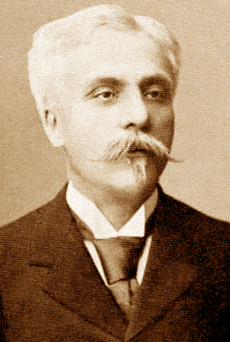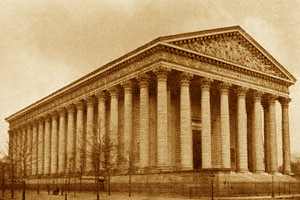

Gabriel Fauré (1845-1924), the composer of Sicilienne, Op.78 for cello and piano, was a pianist, organist, French composer and teacher. Fauré's harmonic richness and melodic innovations exerted a powerful influence on other composers, and he was particularly noted for his sensitive and graceful songs, piano and chamber music, and a large-scale work, a Requiem.
Fauré studied music at the Ecole Niedermeyer in Paris, and his teachers included Louis Niedermeyer and Camille Saint-Saëns. Fauré was one of the founders of the National Society for French Music, a coalition formed in support of French music. Over 150 musicians were part of this group, and just a few of the prominent musicians who were members included composers such as Saint-Saëns, César Franck, Jules Massenet, Vincent d'Indy, Edouard Lalo, Henri Duparc and Emmanuel Chabrier. Some of the objectives of the group were to promote new music, and to encourage French composers. Fauré presented many of his works for the first time at meetings of this society.

In addition to composing, Fauré worked as an organist at various churches such as the prominent Parisian church, the Madeleine (he was choirmaster there too). Fauré later became a professor of composition at the Paris Conservatoire, and he became director of the conservatoire in 1905. Many of his students later became renowned French composers such as: Nadia Boulanger, Maurice Ravel, George Enescu and Charles Koechlin. In 1920, the government of France honored Fauré for his significant influence on French music by awarding him with the Grand-Croix of the Légion d'Honneur (musicians rarely receive this award. The Légion d'Honneur is the highest decoration in France, and the Grand-Croix is the highest degree of this award).
It wasn't until Fauré was in his 50s, that his music became widely known. Up until that time, much of his music was considered too modern to be heard in regular concert halls. His music was, however, praised by the musical elite favoring avant-garde French music. One of Fauré's biggest proponents was Pauline Viardot, and she frequently featured his music in her salons. Fauré dedicated some of his works to the Viardots, and at one point, was engaged to Marianne Viardot, Pauline's daughter. Marianne ultimately called off the wedding and Fauré purportedly was heart-broken. Fauré was considered a transitional composer, one who blended the emotion and expressiveness of Romanticism with the experimental avant-garde of the 20th century in his own unique language. [34]
Fauré originally composed the piece Sicilienne as part of incidental music he wrote in 1893 for the French playwright Molière's play Le bourgeois gentilhomme. In 1898, Fauré reused Sicilienne when he composed incidental music for the English translation version of Maeterlinck's play Pelléas et Mélisande. Fauré later extracted four of the seventeen pieces written for Pelléas et Mélisande, and formed an orchestral suite for concerts, Pelléas et Mélisande Suite, Op. 80 (Sicilienne was one of the pieces Fauré selected for this orchestral suite). Fauré's Sicilienne is the most popular piece from the Pelléas et Mélisande Suite, and it is frequently played by major orchestras today. In 1898, Fauré also scored Sicilienne for cello and piano, and this version is catalogued as Op. 78. [35]
TECHNIQUE TIPS: This piece is an arrangement of Fauré's Sicilienne, Op.78 for cello and piano. 17th and 18th century composers frequently used the sicilienne, a dance, as the musical form for instrumental movements. In the 19th and 20th centuries, composers such as Fauré used the sicilienne to musically convey melancholy emotions or pastoral scenes. In this musical form, an upbeat was frequently used to begin melodic phrases. Although siciliennes generally utilize a slow 6/8 or 12/8 meter,[36] this simplified arrangement of Fauré's piece has a 3/4 meter (the duration of the notes was doubled to make the music easier to sight-read). This piece also has numerous accidentals. An accidental is a sign such as a flat, sharp or natural indicating a momentary departure from the key signature. Accidentals apply to the note immediately following the symbol, and remain in effect throughout the measure in which it appears. In measures 43 and 44, the accidentals are enclosed with parentheses (a Bb in measure 43, and an Eb in measure 44). These are called courtesy accidentals, and are sometimes used in sheet music to remind the musician of the correct pitch after accidentals have been used in prior measures.
© Copyright 2025 RK Deverich. All rights reserved.
Although this online bass class is provided free of charge, all rights are reserved and this content is protected by international copyright law. It is illegal to copy, post or publish this content in any form, and displaying any of this material on other websites, blogs or feeds is prohibited. Permission is given for individual users to print pages and perform music from this website for their personal, noncommercial use.